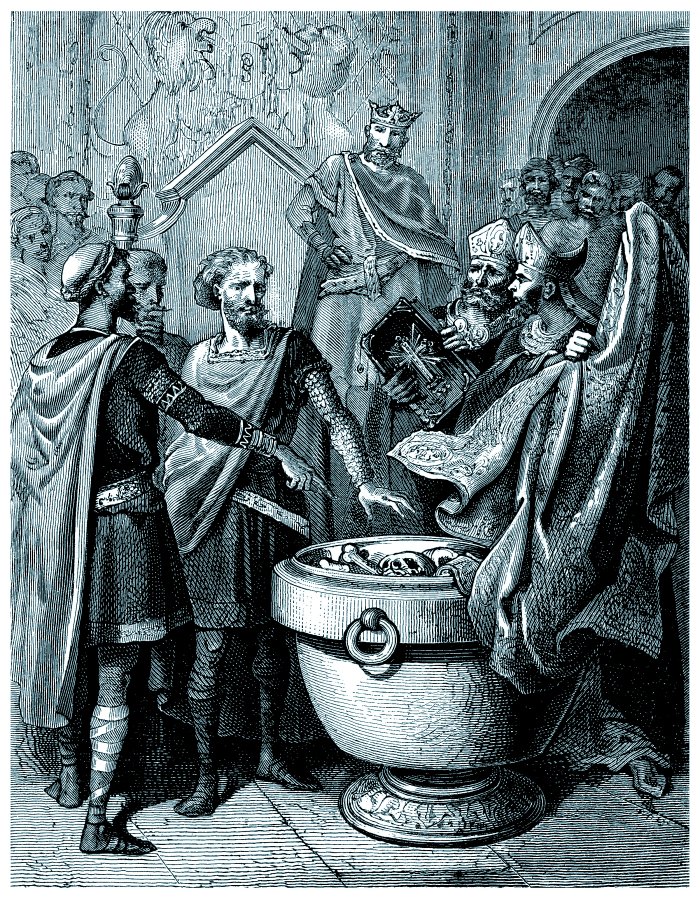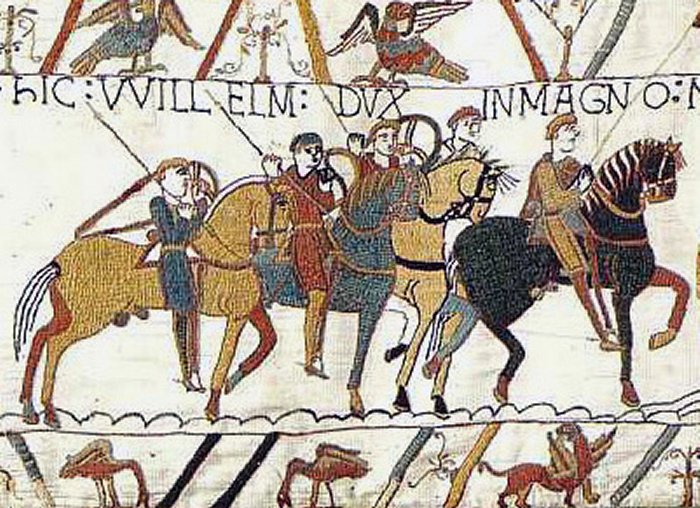William The Conqueror: Ruthless And Powerful Ruler Who Changed Britain Forever
A. Sutherland - AncientPages.com - Wilhelm I Conqueror, also known as "William the Bastard" (ca. 1028 -1087), was King of England and Duke of Normandy.
William the Conqueror & Harold II swearing - 11th century. Image: Adobe Stock - Erica Guilane-Nachez
William was the son of Herleva and Robert I, the Duke of Normandy, France, then known as “Francia”). William was frequently called a bastard, especially by his opponents. The reason was that his mother actually never married his father, Robert, most probably because Herleva was a simple Anglo-Saxon woman and not of noble birth.
Although he was the illegitimate son of the Duke of Normandy Robert the Magnificent (also called "Robert the Devil"), after his father's death in 1035, William was named his successor at only eight years of age. Under the name of William II (in French: Guillaume II), the boy became the new duke of Normandy during a challenging time.
William The Conqueror's Struggle To Gain Power
Corruption, violence, and strong opposition from powerful Norman barons, his bitter rivals, plagued his early reign.
Three of his guardians and his tutor died violent deaths during his childhood. William witnessed the end of his steward, Osbern, whose throat was cut by a Norman rebel while sleeping in William's bed-chamber.
William managed to survive the early years of chaos, both in his own life and in Normandy, with the help of King Henry I of France. From 1046 onwards, he successfully dealt with rebels, troublesome Norman barons, and all those who questioned the right of a bastard to succeed. Then with the support of Henry I, he began to expand his territory.
A late-1800s engraving shows William the Conqueror after the Battle of Hastings. Source
In 1051 the king of England, Edward the Confessor, appointed William as his successor. Edward died in 1066, leaving no direct heirs, and the country was threatened with invasion by two rival claimants, Harald Hardrada, King of Norway, and William, Duke of Normandy.
The English nobles elected to the throne their candidate - Harold Godwin (also called Harold Godwineson or Godwinson), the most powerful of the English lords.
William gathered his army and landed on the island. He was angry; Harold claimed the throne of England for himself, even though he made an oath to William to support his claim. On October 14, 1066, the two armies met in the famous Battle of Hastings.
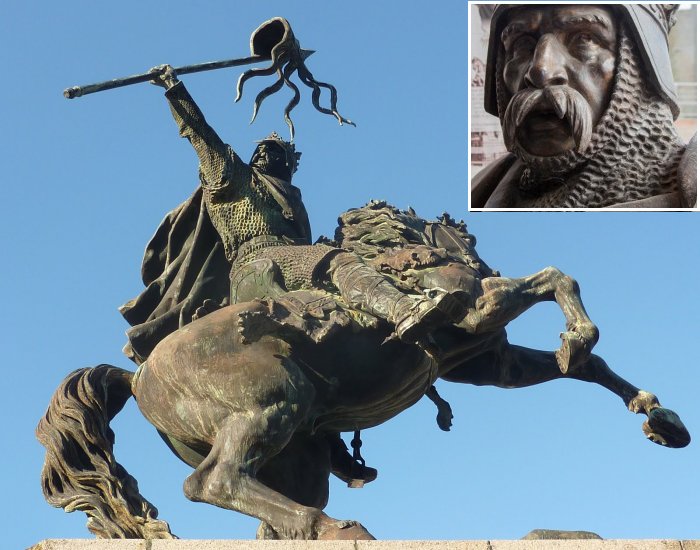 William, I was victorious and he took London without further resistance. Image credit: Man vyi - Public Domain
William, I was victorious and he took London without further resistance. Image credit: Man vyi - Public Domain
According to modern scholars' estimation, each of the sides had between 5,000 and 7,000 men.
William The Conqueror Becomes King Of England
King Harold and his two brothers were killed in the battle. William, I was victorious; he took London without further resistance. He was crowned king of England on Christmas Day, 1066, and ruled until he died in 1087.
However, the conquest of England had not yet ended. Several revolts marked the next five years, and William used them as an excuse to confiscate English land and declare it his property. Subsequently, he distributed the land to his Norman knights, who imposed their unique feudal system.
The following important issue was a nationwide inventory of property landlords and property of the people. William had to determine the taxes he had to pay all his subjects.
The Bayeux Tapestry, chronicling the English/Norman battle in 1066 which led to the Norman Conquest. Image credit: alipaiman - Public Domain
Once an entire picture of England was collated in the Domesday Book, William could send his tax gatherers out. Eventually, the Normans replaced the whole of the Anglo-Saxon aristocracy.
His famous "The Domesday Book" was a detailed register of the population and property of England (now an invaluable source of historical information and still in the Public Record Office in London).
William died on September 9, 1087, in Rouen, France. He had four sons and five daughters; every monarch of England since has been his direct descendant.
He never spoke English and was illiterate, but his influence on England and the English language was enormous.
"William the Conqueror was a fierce warrior that may cause gentler people to shudder. However, our world needs such people. Without them, we might destroy ourselves and our civilizations based on disorganization and a lack of cohesive leadership..." 1
Written by – A. Sutherland AncientPages.com Staff Writer
Updated on February 25, 2023
Copyright © AncientPages.com All rights reserved. This material may not be published, broadcast, rewritten or redistributed in whole or part without the express written permission of AncientPages.com
Expand for referencesReferences:
Ed Sharrow - The Last Battle: The Life of William the Conqueror
Edward Freeman - William the Conqueror
Abbott Jacob, William the Conqueror
- in60Learning, William the Conqueror: The King Who Changed the Course of British History
More From Ancient Pages
-
 Mysterious Ancient Jade Artifact May Offer Evidence Of Trans-Pacific Contact – Did Ancient Sailors From California Visit New Guinea?
Artifacts | Jan 14, 2018
Mysterious Ancient Jade Artifact May Offer Evidence Of Trans-Pacific Contact – Did Ancient Sailors From California Visit New Guinea?
Artifacts | Jan 14, 2018 -
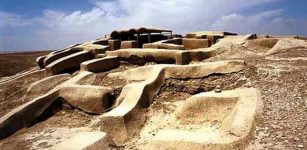 The Burnt City And Its Mysterious Prehistoric Inhabitants
Civilizations | Nov 17, 2014
The Burnt City And Its Mysterious Prehistoric Inhabitants
Civilizations | Nov 17, 2014 -
 Proof That Neanderthals Ate Crabs 90,000 Years Ago Is Another ‘Nail In The Coffin’ For Primitive Cave Dweller Stereotypes
Archaeology | Feb 7, 2023
Proof That Neanderthals Ate Crabs 90,000 Years Ago Is Another ‘Nail In The Coffin’ For Primitive Cave Dweller Stereotypes
Archaeology | Feb 7, 2023 -
 Feared Skinwalker – Shapeshifter That Uses Mind Control To Hurt Victims In Native American Mythology
Featured Stories | May 16, 2019
Feared Skinwalker – Shapeshifter That Uses Mind Control To Hurt Victims In Native American Mythology
Featured Stories | May 16, 2019 -
 Jormungand – Hideous Poison-Spewing Midgard Serpent Was One Of Loki’s Children
Featured Stories | Mar 31, 2018
Jormungand – Hideous Poison-Spewing Midgard Serpent Was One Of Loki’s Children
Featured Stories | Mar 31, 2018 -
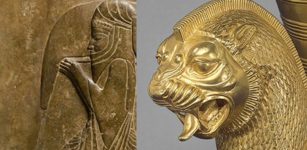 Peace Of Callias – A Treaty That Ended The Greco-Persian Wars
Ancient History Facts | May 15, 2019
Peace Of Callias – A Treaty That Ended The Greco-Persian Wars
Ancient History Facts | May 15, 2019 -
 On This Day In History: Statue of Liberty Arrived In New York Harbor – On June 17, 1885
News | Jun 17, 2016
On This Day In History: Statue of Liberty Arrived In New York Harbor – On June 17, 1885
News | Jun 17, 2016 -
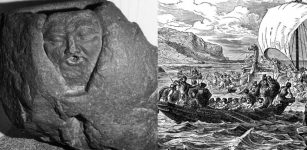 Ancient Mysteries Of Chicago: Is The Puzzling Waubansee Stone A Neglected Pre-Columbian Artifact?
Artifacts | Mar 4, 2017
Ancient Mysteries Of Chicago: Is The Puzzling Waubansee Stone A Neglected Pre-Columbian Artifact?
Artifacts | Mar 4, 2017 -
 Unique Knife That Belonged To Early Medieval Scribe Unearthed In Poland
Archaeology | Jan 22, 2018
Unique Knife That Belonged To Early Medieval Scribe Unearthed In Poland
Archaeology | Jan 22, 2018 -
 Food And Clothing Of Middle Class Of The Sumerian Society
Ancient History Facts | Aug 2, 2017
Food And Clothing Of Middle Class Of The Sumerian Society
Ancient History Facts | Aug 2, 2017 -
 Rosicrucians’ Secret Knowledge Of Atlantis, Pyramids And Extraterrestrial Visitations
Civilizations | Apr 17, 2017
Rosicrucians’ Secret Knowledge Of Atlantis, Pyramids And Extraterrestrial Visitations
Civilizations | Apr 17, 2017 -
 Spectacular Vespasianus Titus Tunnel – An Ancient Roman Engineering Marvel
Ancient Technology | Aug 30, 2018
Spectacular Vespasianus Titus Tunnel – An Ancient Roman Engineering Marvel
Ancient Technology | Aug 30, 2018 -
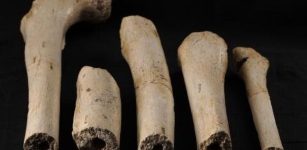 Ancient Human Remains A The Sima De Los Huesos Site Investigated
Archaeology | Mar 15, 2023
Ancient Human Remains A The Sima De Los Huesos Site Investigated
Archaeology | Mar 15, 2023 -
 Manco Capac: Legendary Founder Of The Inca Dynasty Of Peru
Featured Stories | Jun 19, 2016
Manco Capac: Legendary Founder Of The Inca Dynasty Of Peru
Featured Stories | Jun 19, 2016 -
 Sutton Hoo Ship Burial And Famous Helmet That Could Belong To Raedwald, King Of All The Kings Of Britain
Artifacts | Jan 9, 2018
Sutton Hoo Ship Burial And Famous Helmet That Could Belong To Raedwald, King Of All The Kings Of Britain
Artifacts | Jan 9, 2018 -
 Rare Ancient Leopard Painting Discovered On Sarcophagus In Aswan, Egypt
Archaeology | Feb 25, 2020
Rare Ancient Leopard Painting Discovered On Sarcophagus In Aswan, Egypt
Archaeology | Feb 25, 2020 -
 Young Boy Discovers Rare Ancient Roman Treasure In Sussex, UK
Archaeology | Apr 15, 2024
Young Boy Discovers Rare Ancient Roman Treasure In Sussex, UK
Archaeology | Apr 15, 2024 -
 14th Century Murals With ‘Warrior Saints’ Found In Church Of Ancient City Cherven In Bulgaria
Archaeology | Apr 10, 2020
14th Century Murals With ‘Warrior Saints’ Found In Church Of Ancient City Cherven In Bulgaria
Archaeology | Apr 10, 2020 -
 Nippur – Holy City Of God Enlil And One Of The Oldest Cities Of Sumer
Featured Stories | Jul 24, 2023
Nippur – Holy City Of God Enlil And One Of The Oldest Cities Of Sumer
Featured Stories | Jul 24, 2023 -
 Cremation In The Near East Dates Back To 7,000 B.C.
Archaeology | Aug 13, 2020
Cremation In The Near East Dates Back To 7,000 B.C.
Archaeology | Aug 13, 2020

